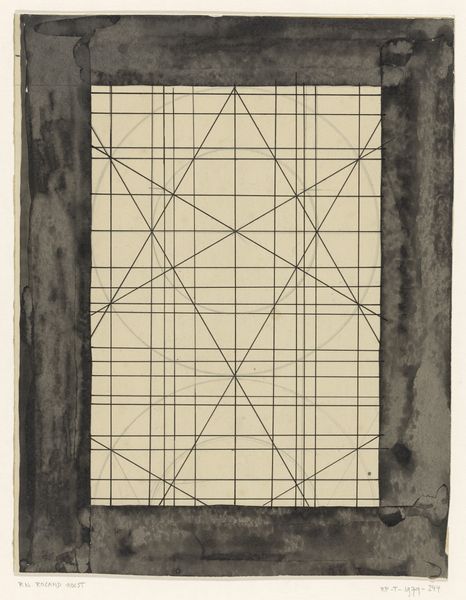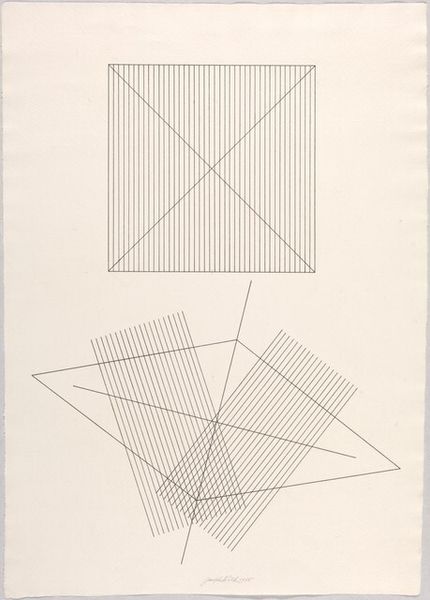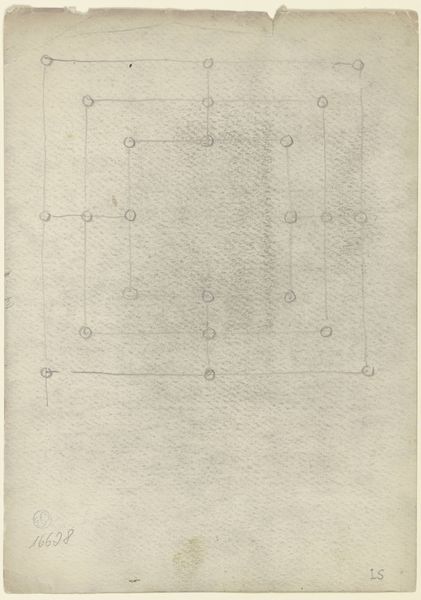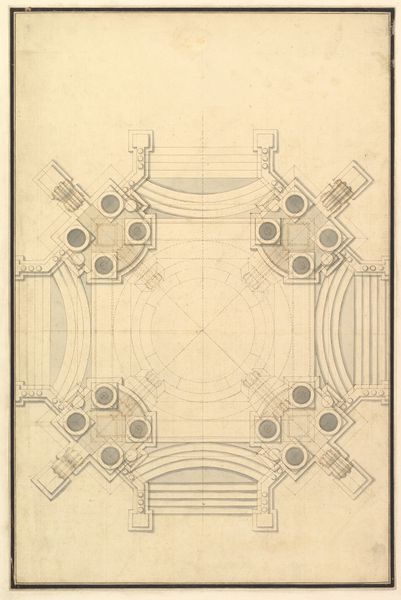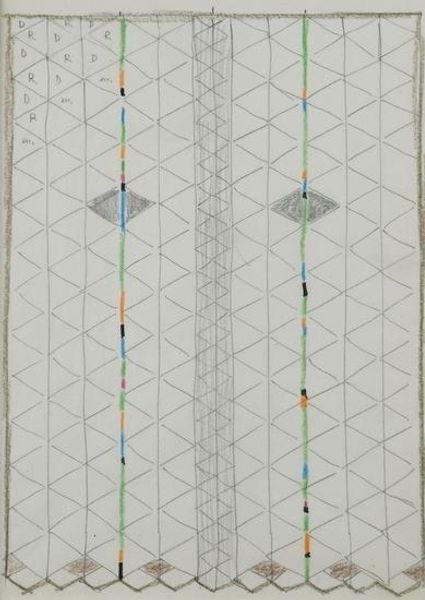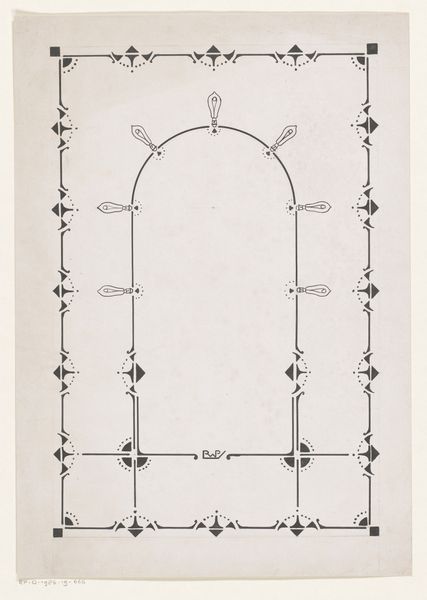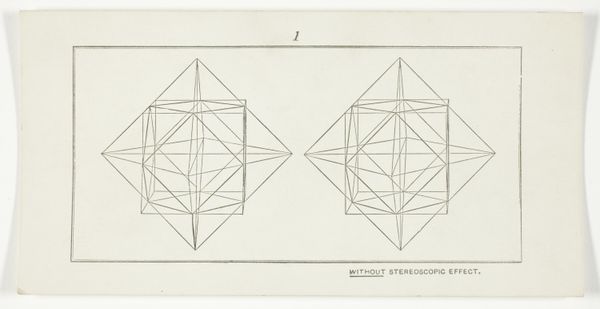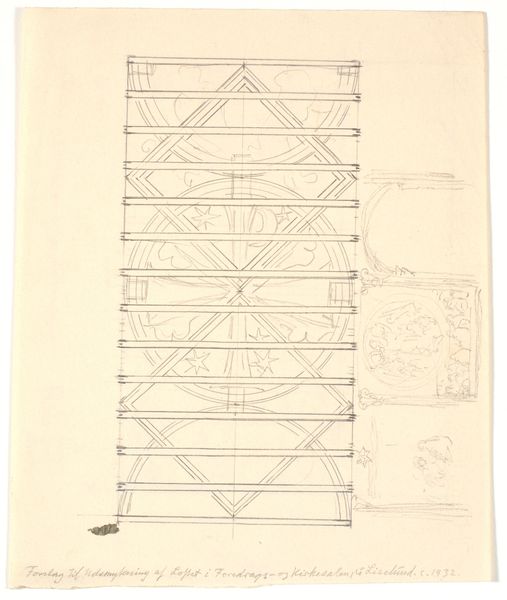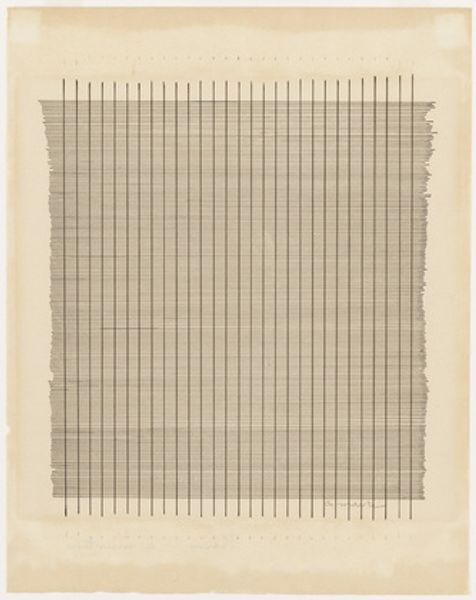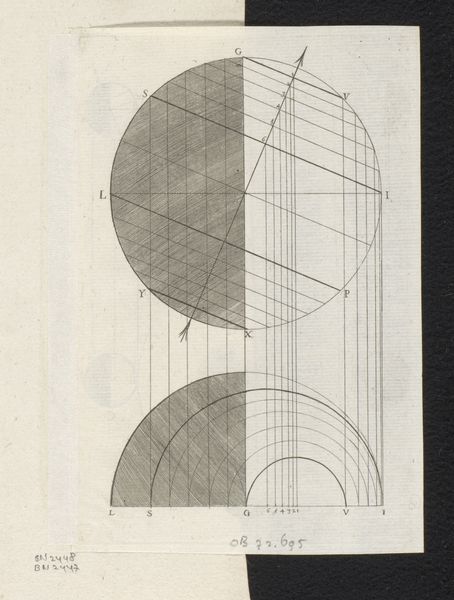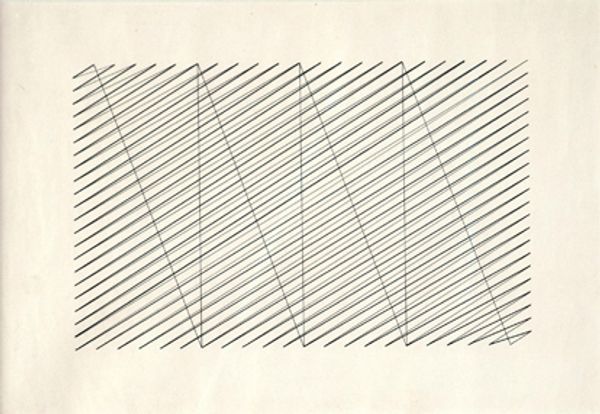
Dimensions: support: 1018 x 757 mm
Copyright: © Stephen Willats | CC-BY-NC-ND 4.0 DEED, Photo: Tate
Editor: Here we have Stephen Willats' "The Twin Towers" from the Tate Collections. It looks like a technical drawing. What's striking is how the architectural form is broken down into seemingly modular, repeatable units. What do you see in this piece? Curator: The work reflects Willats' interest in systems theory and social cybernetics. It's less about architecture as a finished product, and more about the social processes of its making and the conditions of its reception. Consider the diagrammatic presentation – how does that influence our understanding of the towers? Editor: It makes it seem almost like a blueprint, emphasizing the underlying structure over the aesthetic. Curator: Exactly. It makes you wonder about the labor, the materials used, the conditions of production and consumption inherent in building such structures. Editor: That reframes it entirely, from a drawing to a commentary on social and economic systems. Curator: Precisely, focusing on the unseen forces that shape our environment.
Comments
tate 6 months ago
⋮
http://www.tate.org.uk/art/artworks/willats-the-twin-towers-t13340
Join the conversation
Join millions of artists and users on Artera today and experience the ultimate creative platform.
tate 6 months ago
⋮
The Twin Towers 1977 is a drawing in ink with Letraset on paper. It consists of a schematic volumetric rendering of two minimalistic rectangular towers side by side, named by the artist ‘Towers of Ideological Consciousness’. Letraset has been used to label different parts of the diagram. Each tower is divided equally by ‘floors’ that represent a particular ‘concept frame’ of relationships. Points of contact and parallel existences are charted between the two towers. The two ‘ideological consciousnesses’ which the towers embody are described as a ‘predominate consciousness’ and a ‘counter consciousness’. Each concept frame is subject to the four axioms of code, behaviour, identity and value and the combination of these axioms provides Willats with his ‘Parameter Model of Social Relationships’, which appears at the bottom of the drawing and through which combinations of frame and context may be deployed. In a text at the bottom right of the drawing, Willats explained:
